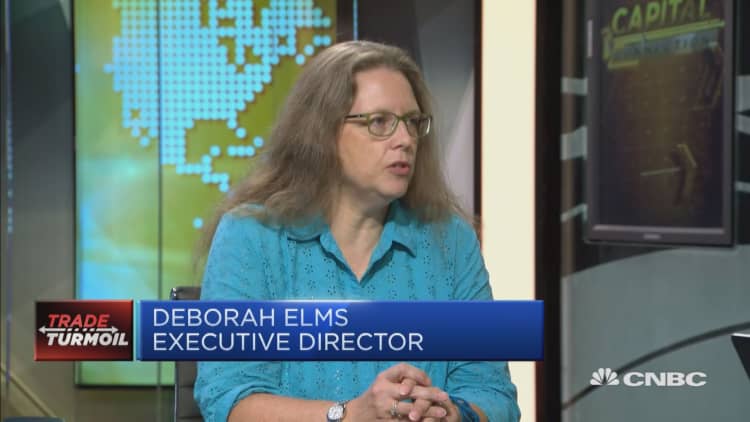China immediately slapped retaliatory tariffs on U.S. imports on Friday after the U.S. imposed duties on $34 billion worth of Chinese products, signaling the start of a full-blown trade war between the world’s two largest economies.
President Donald Trump’s administration imposed the promised tariffs at midnight Washington time. That prompted Beijing to respond in kind with levies on U.S. imports.
China's Foreign Ministry did not provide any immediate detail on the implementation or scale of these duties, but the People's Daily, the official newspaper of the Chinese Communist Party, said they were imposed on a list of $34 billion in goods issued last month that included soybeans, pork and electric vehicles.
Chinese state news agency Xinhua reported that Beijing's tariff rate on U.S. goods, 25 percent, was equal to Washington's rate on Chinese imports.
A spokesperson at China’s Ministry of Commerce said Friday that while the Asian nation had refused to "fire the first shot," it was being forced to respond after the U.S. had "launched the largest trade war in economic history."
“This act is typical trade bullying,” the spokesperson said. “It seriously jeopardizes the global industrial chain … hinders the pace of global economic recovery, triggers global market turmoil and will affect more innocent multinational companies, general companies and consumers.”
The Commerce Ministry also said it would look to report the U.S. to the World Trade Organization on Friday, accusing Washington of breaching international trade laws.
Market confusion
China's soy meal futures plunged more than 2 percent during Friday afternoon trade in Asia before recovering most of their losses, amid market confusion over whether Beijing had actually implemented tariffs on soybeans and other U.S. goods.

The absence of an immediate official statement specifically clarifying China's response to U.S. tariffs did little to alleviate a sense of ambiguity among market participants.
The prospect of a tit-for-tat trade war is widely expected to make soy meal more expensive, supporting soy meal futures, particularly over the coming months when the U.S. is projected to become China's primary soybean supplier.
How did we get here?
The Trump administration initiated the dispute in April, announcing the tariffs and accusing China of using "unfair" tactics to build a large trade surplus with the U.S. and expropriating American technology.
The White House has also pressed Congress to tighten rules on Chinese investment in U.S. technology.
Nonetheless, despite the urging of business groups and lawmakers to negotiate a truce, there was little sign Friday that the two sides would reach a compromise anytime soon.

Beijing and Washington have held several rounds of high-level talks since early May, but the Trump administration has since said it is considering expanding the list of targeted Chinese imports. Trump said Thursday that another $16 billion of tariffs are expected to go into effect in two weeks, before ratcheting up the stakes to warn that measures totaling $500 billion in Chinese goods could soon come into force.
External observers have widely criticized this approach, saying such protectionist rhetoric undermines free trade policies that have shaped the global exchange of goods in recent decades.
— CNBC's John W. Schoen and The Associated Press contributed to this report.


